Mercury 4 HP FourStroke Test
Choosing the right outboard for your tender is never easy. Most boat owners have medium-sized boats that usually come equipped with a tender from 2 to 3.5 meters in length. As a result, for reasons of space and convenience, everybody want a lightweight powerful outboard that can be also easy-to-handle and reliable. Characteristics that are not always able to get along with each other.
We have tested an engine that has proved to be an appropriate option: the Mercury 4 HP FourStroke.
The test of the Mercury 4 HP Fourstroke
I drive to the Marina di 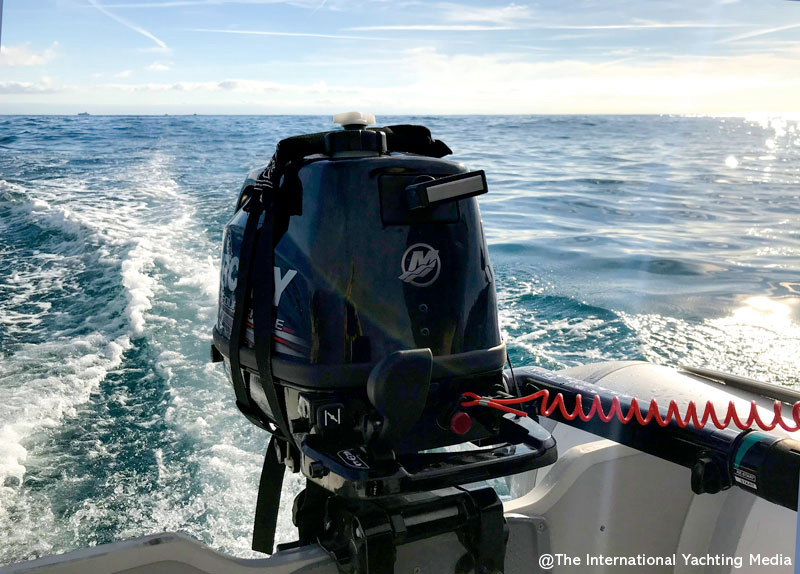
The Daydreamer is a real lady of the sea, she is 30 years old and her transom, in accordance with the design of her time, is very vertical. Consequently, I can’t get directly the tender, so I opt for the jetty alongside which the tender is docked.
The Mercury 4 HP FourStroke weights 25 kg. It’s not an excessive load, so I put it on my shoulders and I walk down the walkway. With proper attention, it’s a feasible operation that doesn’t require any extreme efforts.
I lean the engine against the jetty. This, too, is a good reliability test. Often, indeed, outboards, when left in horizontal position, start with difficulty. I climb on board the tender, I raise the 4 HP engine up and put it in place, tightening the two fastening screws.
In this case, too, I have done all by myself. Just the time to make sure that the fuel lever, air and the breather cap on the fuel tank are open and I try to start the outboard. Starting is manual and our Mercury starts with the third shot. An excellent result if we consider that it was not started for a long time and I have just “shaken” it vigorously.
Now, I just want to simulate the typical situation where a tender is used. So, I invite another person to climb on board with me. I calculate that our overall weight is about 130 kg and establish that this will the total load which the 4 HP will have to face with. I engage gear and go.
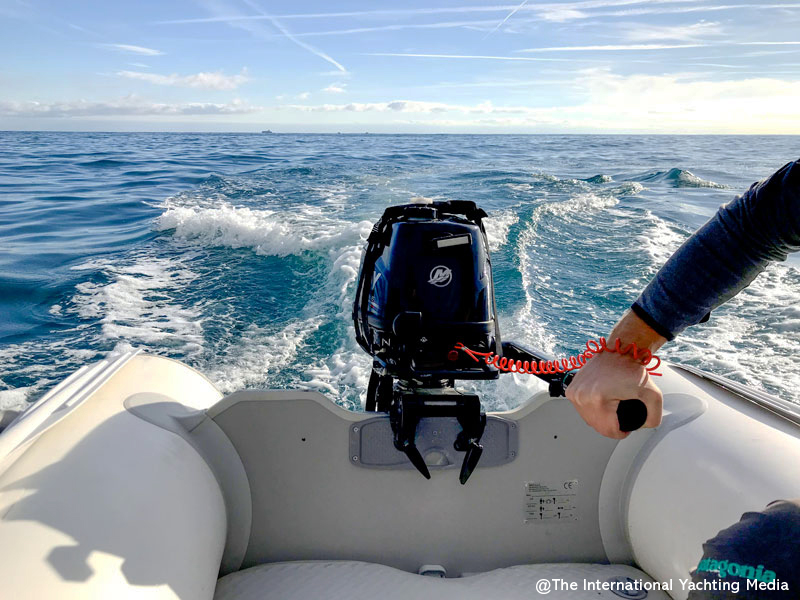
Yes, it will and I can realize that immediately. The waves I encounter at the mouth of the port is long and residual: I keep it on the beam and, at max RPM, I run at 10 knots.
I decide to have fun and I put the bow to the waves. With the throttle all forward and with the waves pushing the stern, the boat planes and reaches a speed of 12 knots. At this speed, I note with some surprise that the engine, even at full power, is little noisy.
Even when I put the bow to the waves, I can keep the engine at the top of the rev range and I record a speed of 9 knots.
Then, I continue 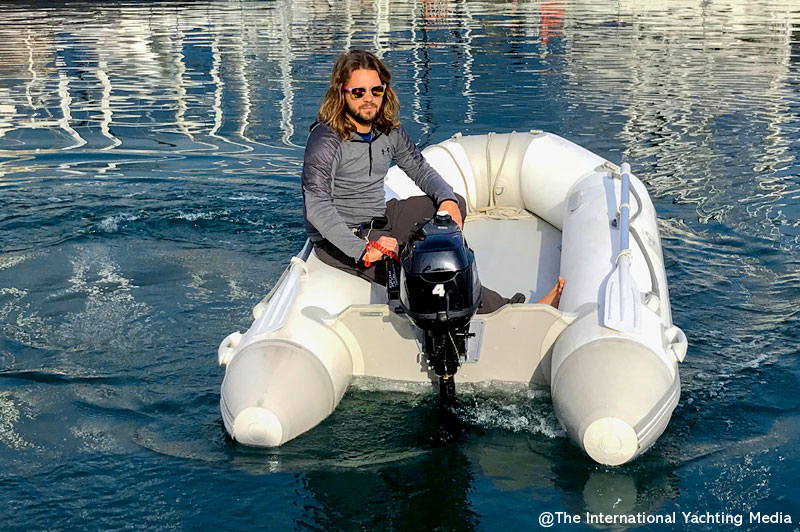
Sailing back to the port, I focus on speed measurements at medium and low revs. With the throttle in its medium position, I reach 7.5 knots while, with the engine idling, I run at little more than 3 knots. The engine noise is really low and therefore excellent for coastal trolling.
To dock the tender, I test the reverse gear. So, I move the easy-handling inverter level and engage the gear easily. Manoeuvring is easy and user-friendly. Once the tender is docked alongside the jetty, I leave the engine idling in neutral for a while and I detect no shutdowns.
Not satisfied of the fun that, I must confess it, I inevitably have every time I’m at the helm of a tender (of every size), I leave the port again. This time, I do that alone; with one hand, I take the rope secured to the bow while, with the other, I hold the accelerator. I move the weight forward and I find myself planing with the 4 HP at 15 knots. A really amazing result.
Conclusions
The Mercury 4 HP FourStroke has proved to be reliable, handy and powerful. The speeds recorded during our test make us think that, even if the tender had been at full load, this outboard would have performed well.
The Mercury 4 HP, thanks to its excellent weight/power ratio, is the ideal option for both medium-sized tenders and small sailboats.
Performance Table
Test Conditions: sea with residual waves, no wind, 2 passengers on board
Tender used during the test: Med Easy Tender Soft Line 310, with inflatable V-keel
| RPM | Speed |
| Minimum | 3.3 knots |
| Medium | 7.5 knots |
| Max | 12 knots (15 knots with one single person on board) |
Mercury 4 HP FourStroke Technical Specs
| Power | 4 Hp / 2.9 Kw |
| Engine Type | 1 cylinder |
| Displacement | 7.5 CID / 123 CC |
| Full throttle RPM | 4,500-5,500 |
| Fuel Induction System | 2-valve pushrod (overhead valve) |
| Recommended fuel | Unleaded, min 90 RON |
| Recommended oil | Mercury FourStroke 10W-30 |
| Engine protection operator warning system | Over-rev, Low oil pressure |
| Starting | Manual |
| Steering | Tiller |
| Dry weight | 25 Kg |
| Cooling system | Water-cooled with thermostat |
| Integrated fuel tank | 1.1 L |
| Optional fuel tank | 12 L |
| Gear Shift | F – N – R |

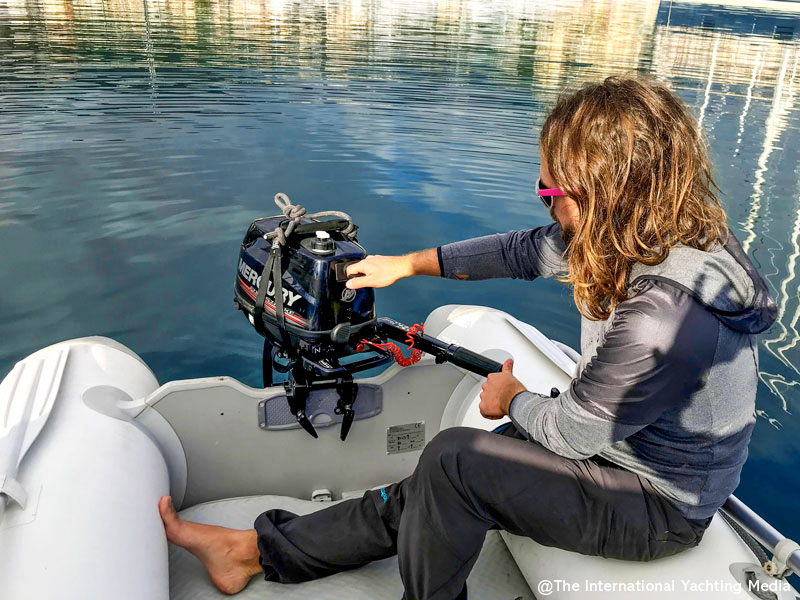
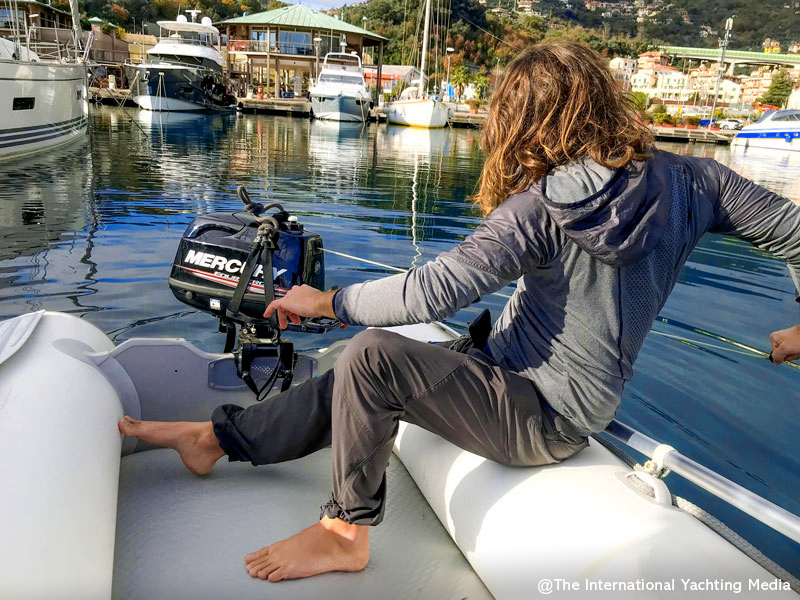
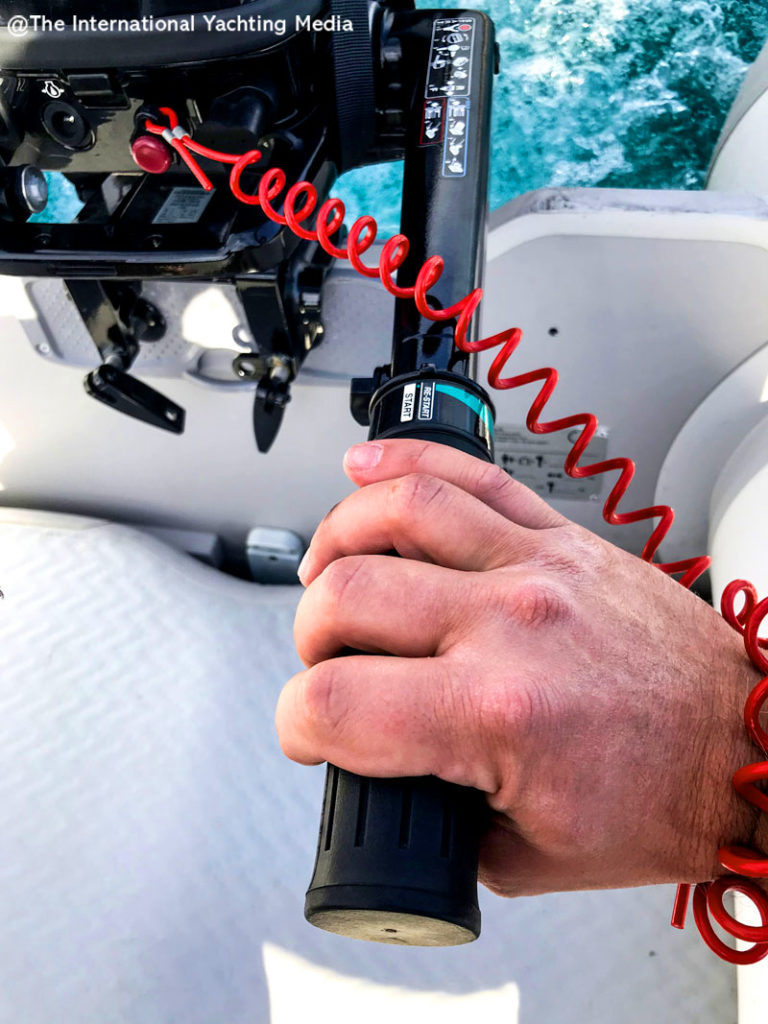
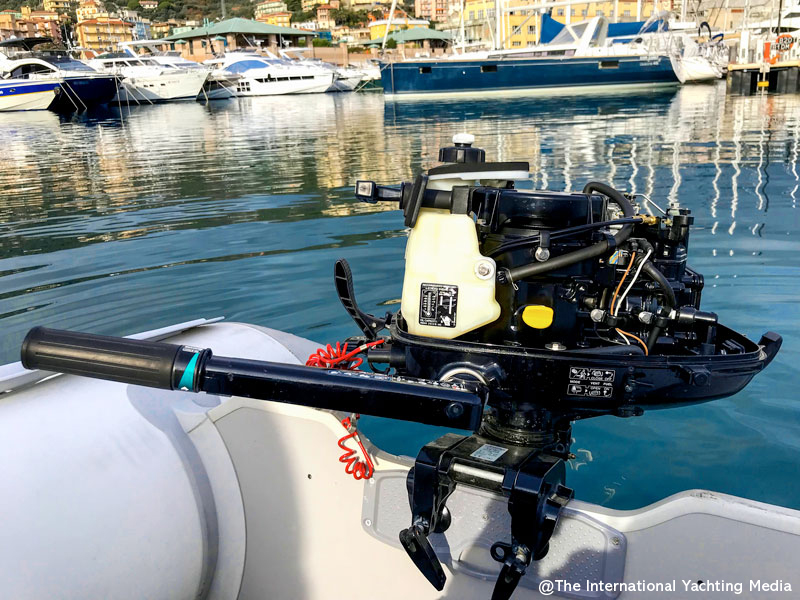



















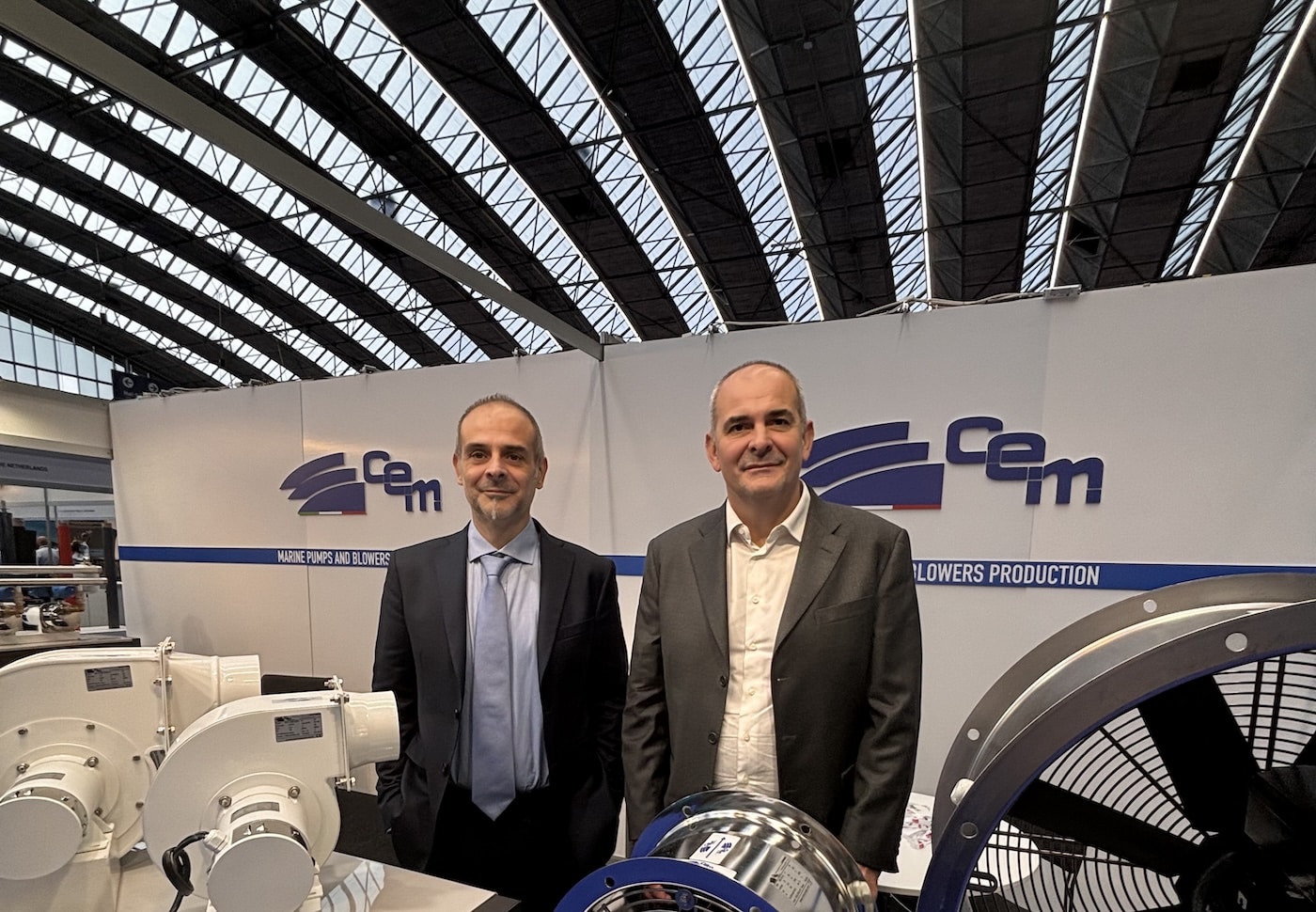


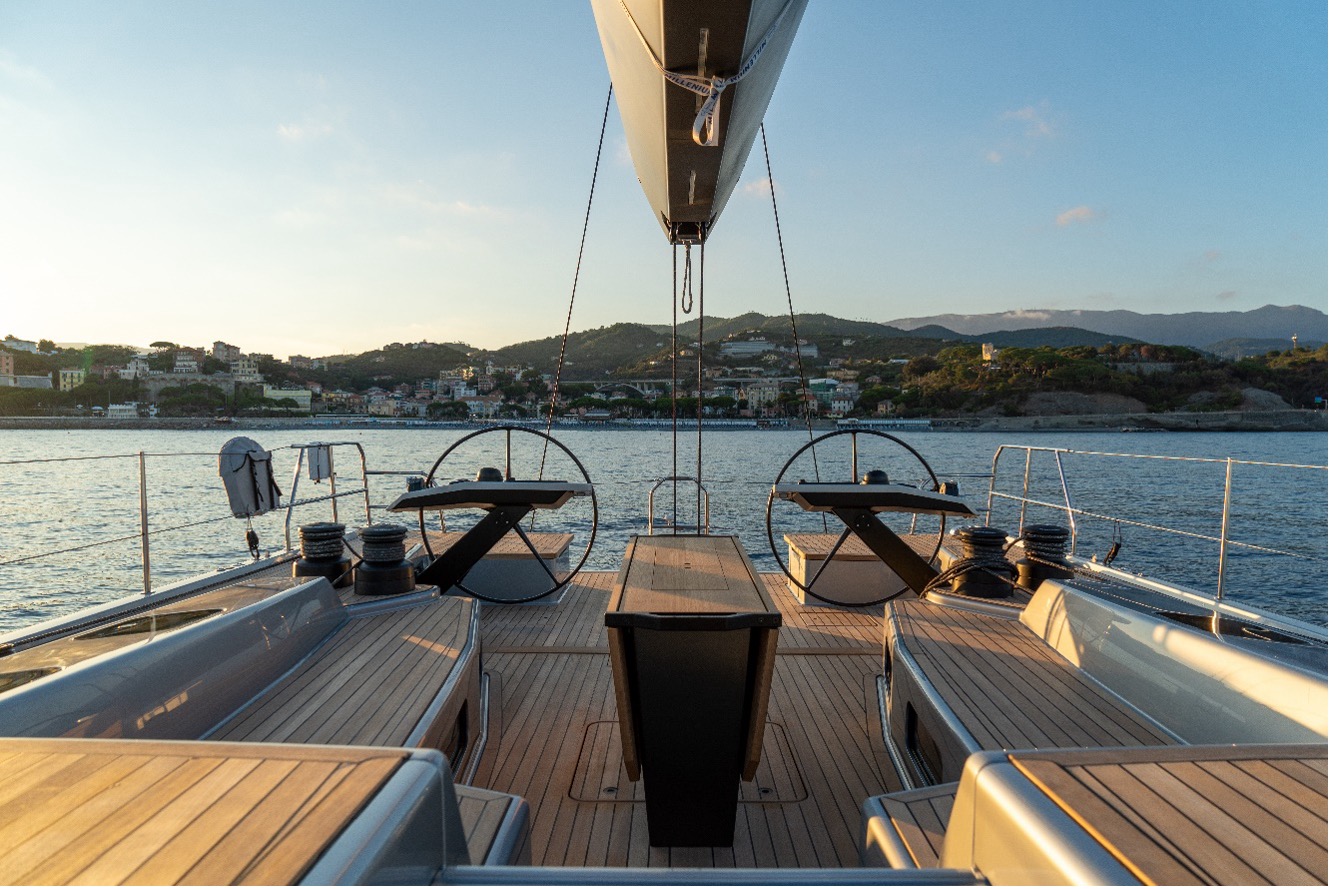

3 Responses
Onde acho esse motor p comprar
What a shame you don’t mention ANYWHERE in this review whether the engine in question is a STANDARD shaft or LONG shaft!
Long shaft on an inflatable tender?
what a shameful question
ah ah ah